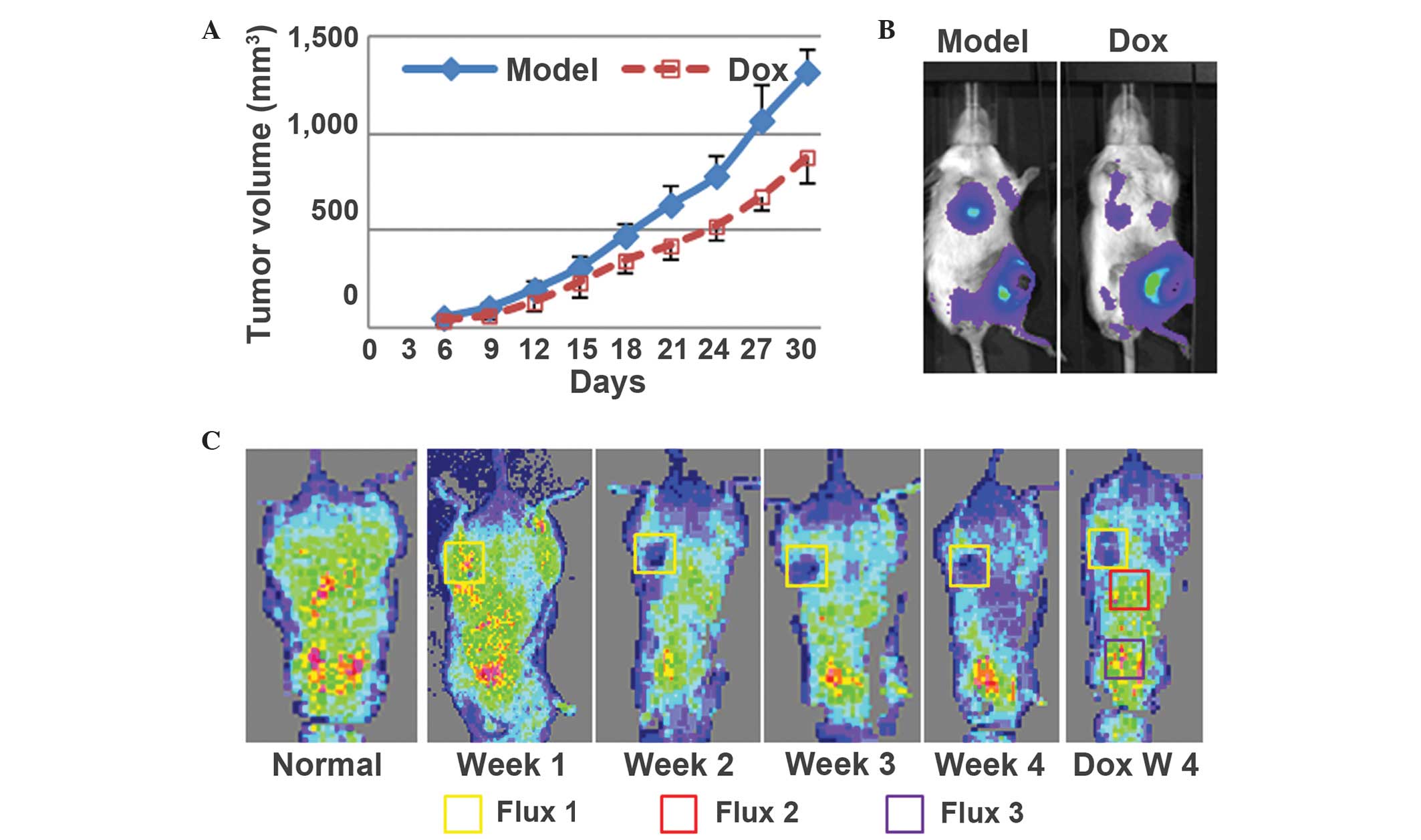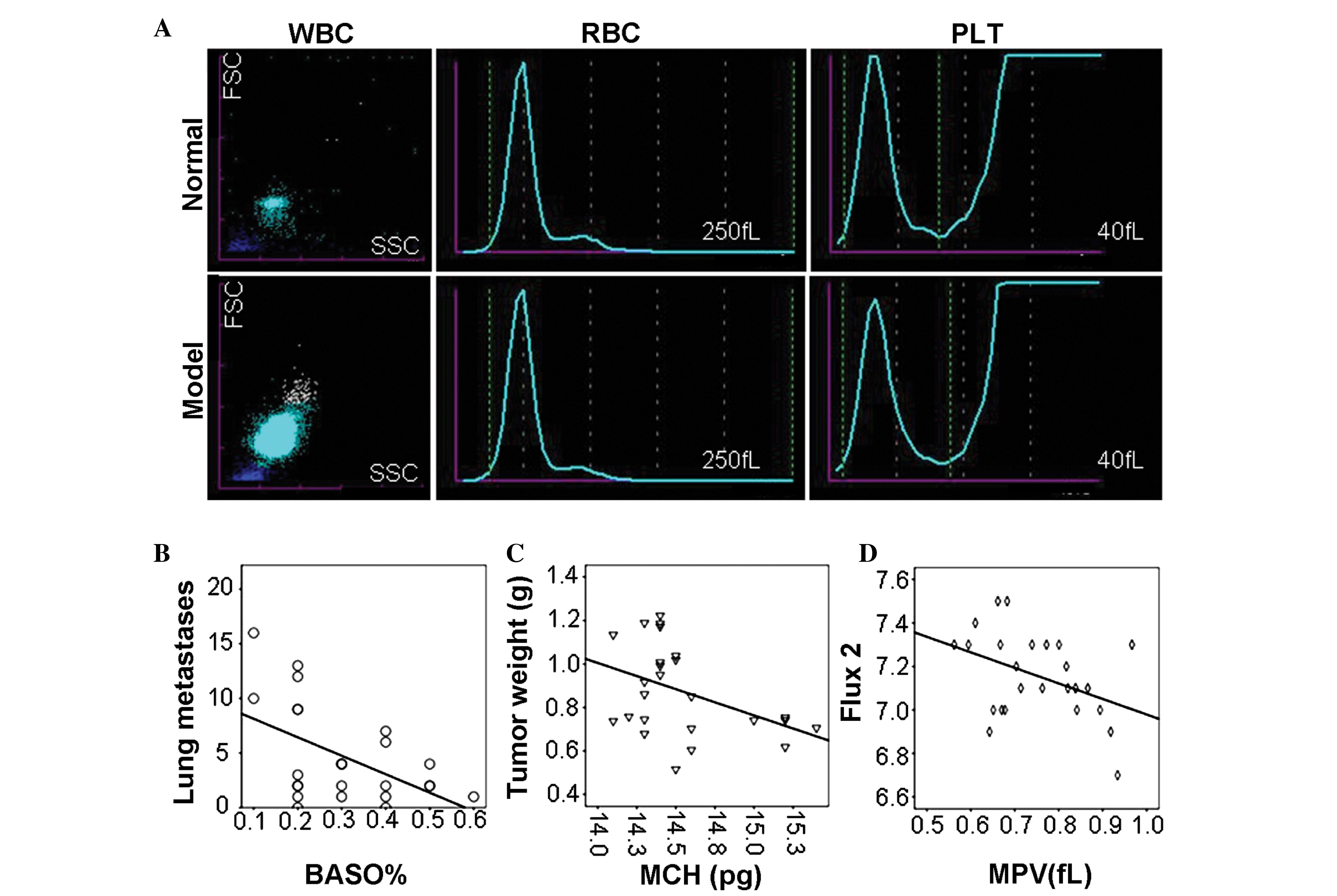|
1
|
Maruvka YE, Tang M and Michor F: On the
validity of using increases in 5-year survival rates to measure
success in the fight against cancer. PLoS One. 23:e831002014.
View Article : Google Scholar
|
|
2
|
Herrick AL and Clark S: Quantifying
digital vascular disease in patients with primary Raynaud's
phenomenon and systemic sclerosis. Ann Rheum Dis. 57:70–78. 1998.
View Article : Google Scholar : PubMed/NCBI
|
|
3
|
Joyce JA and Pollard JW:
Microenvironmental regulation of metastasis. Nat Rev Cancer.
9:239–252. 2009. View
Article : Google Scholar : PubMed/NCBI
|
|
4
|
van der Hulle T, den Exter PL, Kooiman J,
van der Hoeven JJ, Huisman MV and Klok FA: Meta-analysis of the
efficacy and safety of new oral anticoagulants in patients with
cancer-associated acute venous thromboembolism. J Thromb Haemost.
12:1116–1120. 2014. View Article : Google Scholar : PubMed/NCBI
|
|
5
|
Kuderer NM, Ortel TL and Francis CW:
Impact of venous thromboembolism and anticoagulation on cancer and
cancer survival. J Clin Oncol. 27:4902–4911. 2009. View Article : Google Scholar : PubMed/NCBI
|
|
6
|
Khorana AA and Connolly GC: Assessing risk
of venous thromboembolism in the patient with cancer. J Clin Oncol.
27:4839–4847. 2009. View Article : Google Scholar : PubMed/NCBI
|
|
7
|
Khorana AA and Fine RL: Pancreatic cancer
and thromboembolic disease. Lancet Oncol. 5:655–663. 2004.
View Article : Google Scholar : PubMed/NCBI
|
|
8
|
Labelle M, Begum S and Hynes RO: Direct
signaling between platelets and cancer cells induces an
epithelial-mesenchymal-like transition and promotes metastasis.
Cancer Cell. 20:576–590. 2011. View Article : Google Scholar : PubMed/NCBI
|
|
9
|
Gao JL, Ji X, He TC, et al: Tetrandrine
suppresses cancer angiogenesis and metastasis in 4T1 tumor-bearing
mice. Evid Based Complement Alternat Med.
2013:2650612013.PubMed/NCBI
|
|
10
|
Vadasz B, Chen P, Yougbaré I, et al:
Platelets and platelet alloantigens: Lessons from human patients
and animal models of fetal and neonatal alloimmune
thrombocytopenia. Genes & Diseases. (In Press). 2015.
View Article : Google Scholar
|
|
11
|
Erpenbeck L and Schon MP: Deadly allies:
The fatal interplay between platelets and metastasizing cancer
cells. Blood. 115:3427–3436. 2010. View Article : Google Scholar : PubMed/NCBI
|
|
12
|
Kim YJ, Borsig L, Varki NM and Varki A:
P-selectin deficiency attenuates tumor growth and metastasis. Proc
Natl Acad Sci USA. 95:9325–9330. 1998. View Article : Google Scholar : PubMed/NCBI
|
|
13
|
Gay LJ and Felding-Habermann B:
Contribution of platelets to tumour metastasis. Nat Rev Cancer.
11:123–134. 2011. View
Article : Google Scholar : PubMed/NCBI
|
|
14
|
Kahramanca S, Kaya O, Ozgehan G, et al:
Are neutrophil-lymphocyte ratio and platelet-lymphocyte ratio as
effective as Fournier's gangrene severity index for predicting the
number of debridements in Fourner's gangrene? Ulus Travma Acil
Cerrahi Derg. 20:107–112. 2014. View Article : Google Scholar : PubMed/NCBI
|
|
15
|
Min B, Brown MA and Legros G:
Understanding the roles of basophils: breaking dawn. Immunology.
135:192–197. 2012. View Article : Google Scholar : PubMed/NCBI
|
|
16
|
Schmitt E, Meuret G and Stix L: Monocyte
recruitment in tuberculosis and sarcoidosis. Br J Haematol.
35:11–17. 1977. View Article : Google Scholar : PubMed/NCBI
|
|
17
|
Kao SC, Pavlakis N, Harvie R, et al: High
blood neutrophil-to-lymphocyte ratio is an indicator of poor
prognosis in malignant mesothelioma patients undergoing systemic
therapy. Clin Cancer Res. 16:5805–5813. 2010. View Article : Google Scholar : PubMed/NCBI
|
|
18
|
Use and Care of Laboratory Animals,
Zhejiang province. simplewww.sydw.zj.cn/com-apply-singup/com-apply-feeds/2014-10-30-02-17-43/326-2014-10-28-02-41-40.htmlAccessed.
August 17–2009
|
|
19
|
Rastegar F, Gao JL, Shenaq D, et al:
Lysophosphatidic acid acyltransferase β (LPAATβ) promotes the tumor
growth of human osteosarcoma. PLoS One. 5:e141822010. View Article : Google Scholar : PubMed/NCBI
|
|
20
|
Gao JL, Lv GY, He BC, et al: Ginseng
saponin metabolite 20(S)-protopanaxadiol inhibits tumor growth by
targeting multiple cancer signaling pathways. Oncol Rep.
30:292–298. 2013.PubMed/NCBI
|
|
21
|
He BC, Gao JL, Luo X, et al: Ginsenoside
Rg3 inhibits colorectal tumor growth through the down-regulation of
Wnt/β-catenin signaling. Int J Oncol. 38:437–445. 2011. View Article : Google Scholar : PubMed/NCBI
|
|
22
|
Opazo Saez AM, Mosel F, Nurnberger J, et
al: Laser Doppler imager (LDI) scanner and intradermal injection
for in vivo pharmacology in human skin microcirculation: Responses
to acetylcholine, endothelin-1 and their repeatability. Br J Clin
Pharmacol. 59:511–519. 2005. View Article : Google Scholar : PubMed/NCBI
|
|
23
|
Rack B, Schindlbeck C, Juckstock J, et al:
Circulating tumor cells predict survival in early average-to-high
risk breast cancer patients. J Natl Cancer Inst. 106:2014.
View Article : Google Scholar : PubMed/NCBI
|
|
24
|
Tao K, Fang M, Alroy J and Sahagian GG:
Imagable 4T1 model for the study of late stage breast cancer. BMC
cancer. 8:2282008. View Article : Google Scholar : PubMed/NCBI
|
|
25
|
Yu LX, Yan L, Yang W, et al: Platelets
promote tumour metastasis via interaction between TLR4 and tumour
cell-released high-mobility group box1 protein. Nat Comm.
5:52562014. View Article : Google Scholar
|
|
26
|
Su MC, Cheng CY and Wang PC: A
neural-network-based approach to white blood cell classification.
ScientificWorldJournal. 2014:7963712014. View Article : Google Scholar : PubMed/NCBI
|
|
27
|
Médioni J, Guastalla JP and Drouet L:
Thrombosis and breast cancer: Incidence, risk factors,
physiopathology and treatment. Bull Cancer. 99:199–210. 2012.(In
French). PubMed/NCBI
|
|
28
|
Louzada ML, Majeed H, Dao V and Wells PS:
Risk of recurrent venous thromboembolism according to malignancy
characteristics in patients with cancer-associated thrombosis: A
systematic review of observational and intervention studies. Blood
Coagul Fibrinolysis. 22:86–91. 2011. View Article : Google Scholar : PubMed/NCBI
|
|
29
|
Mezouar S, Darbousset R, Dignat-George F,
Panicot-Dubois L and Dubois C: Inhibition of platelet activation
prevents the P-selectin and integrin-dependent accumulation of
cancer cell microparticles and reduces tumor growth and metastasis
in vivo. Int J Cancer. 136:462–475. 2015. View Article : Google Scholar : PubMed/NCBI
|
|
30
|
Ludwig RJ, Schön MP and Boehncke WH:
P-selectin: A common therapeutic target for cardiovascular
disorders, inflammation and tumour metastasis. Expert Opin Ther
Targets. 11:1103–1117. 2007. View Article : Google Scholar : PubMed/NCBI
|
|
31
|
Steller EJ, Raats DA, Koster J, et al:
PDGFRB promotes liver metastasis formation of mesenchymal-like
colorectal tumor cells. Neoplasia. 15:204–217. 2013. View Article : Google Scholar : PubMed/NCBI
|
|
32
|
Lin MS, Huang JX, Zhu J and Shen HZ:
Elevation of platelet count in patients with colorectal cancer
predicts tendency to metastases and poor prognosis.
Hepatogastroenterology. 59:1687–1690. 2012.PubMed/NCBI
|
|
33
|
Sasaki K, Kawai K, Tsuno NH, Sunami E and
Kitayama J: Impact of preoperative thrombocytosis on the survival
of patients with primary colorectal cancer. World J Surg.
36:192–200. 2012. View Article : Google Scholar : PubMed/NCBI
|
|
34
|
Barrett-Lee P, Bokemeyer C, Gascón P, et
al: Management of cancer-related anemia in patients with breast or
gynecologic cancer: New insights based on results from the European
Cancer Anemia Survey. Oncologist. 10:743–757. 2005. View Article : Google Scholar : PubMed/NCBI
|
|
35
|
Yadav D, Mishra M, Joseph AZ, et al:
Status of antioxidant and lipid peroxidation in type 2 diabetic
human subjects diagnosed with and without metabolic syndrome by
using NCEP-ATPIII, IDF and WHO criteria. Obes Res Clin Practice.
9:158–167. 2015. View Article : Google Scholar
|
|
36
|
Kemal Y, Demirag G, Bas B, Onem S, Teker F
and Yucel I: The value of red blood cell distribution width in
endometrial cancer. Clin Chem Lab Med. 53:823–827. 2015. View Article : Google Scholar : PubMed/NCBI
|
|
37
|
Arinobu Y, Iwasaki H and Akashi K: Origin
of basophils and mast cells. Allergol Int. 58:21–28. 2009.
View Article : Google Scholar : PubMed/NCBI
|
|
38
|
Sokol CL, Barton GM, Farr AG and Medzhitov
R: A mechanism for the initiation of allergen-induced T helper type
2 responses. Nat Immunol. 9:310–318. 2008. View Article : Google Scholar : PubMed/NCBI
|
|
39
|
Valastyan S and Weinberg RA: Tumor
metastasis: Molecular insights and evolving paradigms. Cell.
147:275–292. 2011. View Article : Google Scholar : PubMed/NCBI
|











